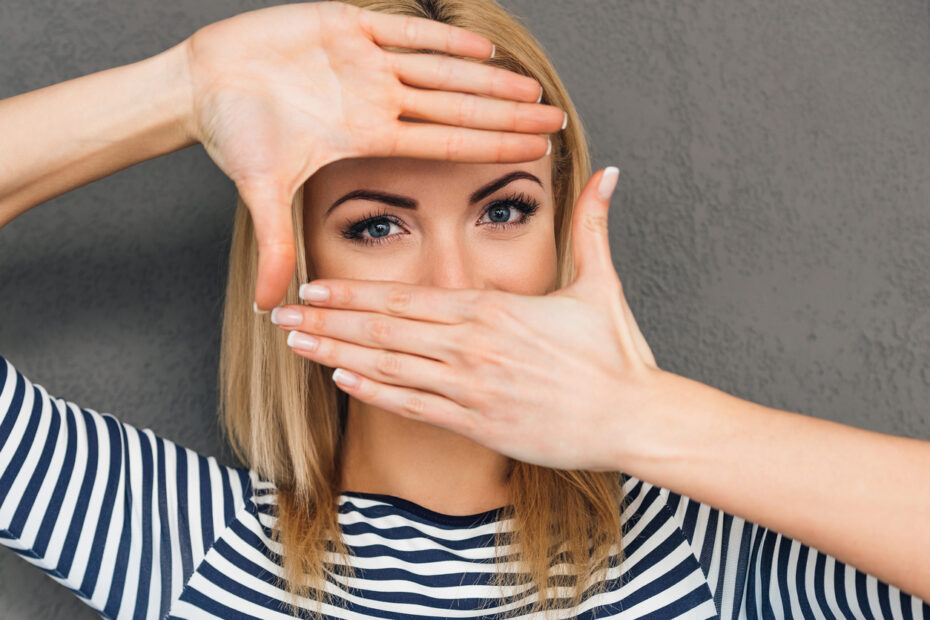If you work in retail or another customer-facing role, you’ll know that establishing meaningful connections with customers is paramount. Just as a smile can make a ka-ching difference in a sales environment, this article explores another under-rated yet potent non-verbal communication tool—eye contact: why it’s so important, why it’s hard for some people, and how Laughter Yoga may be able to help.
Why eye contact is important
While in some cultures, a direct gaze can be seen as disrespectful—and in some situations, even threatening—eye contact in business interactions in Australia is generally considered invaluable. It’s right up there with smiling.
Like smiling, it’s part of our hard-wiring. Japanese research, using simultaneous magnetic resonance imaging of its subjects, revealed real-time interaction during eye contact is mediated by the cerebellum (part of the brain responsible for cognitive function including language processing and memory) and the limbic mirror system.
Inn simpler terms, eye contact is like a bridge between a service provider and a customer, fostering trust, empathy, and understanding. Here’s what eye contact can convey:
Signalling attention
Holding eye contact indicates you are attentive and engaged. You are focused on the person before you and what they are saying.
When customers feel seen and acknowledged through eye contact, they are more likely to perceive the interaction as genuine and personalised, leading to increased satisfaction and loyalty.
If you are making minimal eye contact with your prospect or client, they may well feel that you’re disinterested in them and their needs and take their business elsewhere.
Believe in me
People often associate direct eye contact with honesty, trust and confidence.Some studies indicate that body language including eye contact accounts for more than 55% of messaging being received (and that the words spoken account for less than 10%).
A sign of respect
In most western cultures, maintaining eye contact is regarded as a sign of respect.
Expressing emotion
Eyes can express so many emotions – fear, anger, excitement, joy, sadness…
Eye contact helps to gauge customer reactions, enabling you to tailor your approach accordingly, whether that’s offering assistance, resolving concerns, or simply sharing a moment of warmth. Slight pupil dilation indicates interest while a narrowing suggests concern. There’s your cue to change tack if you’re looking.
Why eye contact can be hard
Eye contact anxiety is real.
- It may be due to shyness or a lack of confidence.
- It may be cultural. In many Asian, African and Latin American countries, a steady gaze can be misinterpreted as rude or threatening.
- It may be due to social anxiety disorder or other mental health issue.
- Neuro-divergent individuals often find eye contact overwhelming and stressful.
How Laughter Yoga helps improve eye contact
If improving your ease with eye contact is important to you or your workplace team, Laughter Yoga may be able to help.
Laughter Yoga exercises are generally practised in a group and we look at one another throughout the session. In fact, some exercises require us to really look into one another’s eyes, up close. We’re not laughing at one another: we are laughing with one another.
- Laughing in a group, we become more relaxed and less self-conscious.
- As we laugh together, mirror neurons are firing off, forming deep emotional connections with those whose gaze meets ours and we become more willing to hold eye contact.
- Laughter Yoga helps us build our self-confidence which in turn can help the shyest or most anxious person look another in the eye more readily.
- Laughter Yoga helps foster mindfulness. We are in the here and now when we are laughing, and less likely to distracted by other thoughts. We can focus.
Workplace laughter sessions, as part of professional development or workplace wellbeing, also help staff release tension, boost mood, and work better together.
While it can take repeated exposure to these exercises to feel at home with looking into another’s eyes with confidence and cheer, the return on investment can be an enriched work environment, with a culture of empathy, positivity and authentic connection, and greater customer satisfaction.
Keen to know more? Email HeatherJoy at The Happydemic about yours needs. We’ll tailor workshops to suit, online or in person, or guide you to community clubs in which to practise outside work hours.

